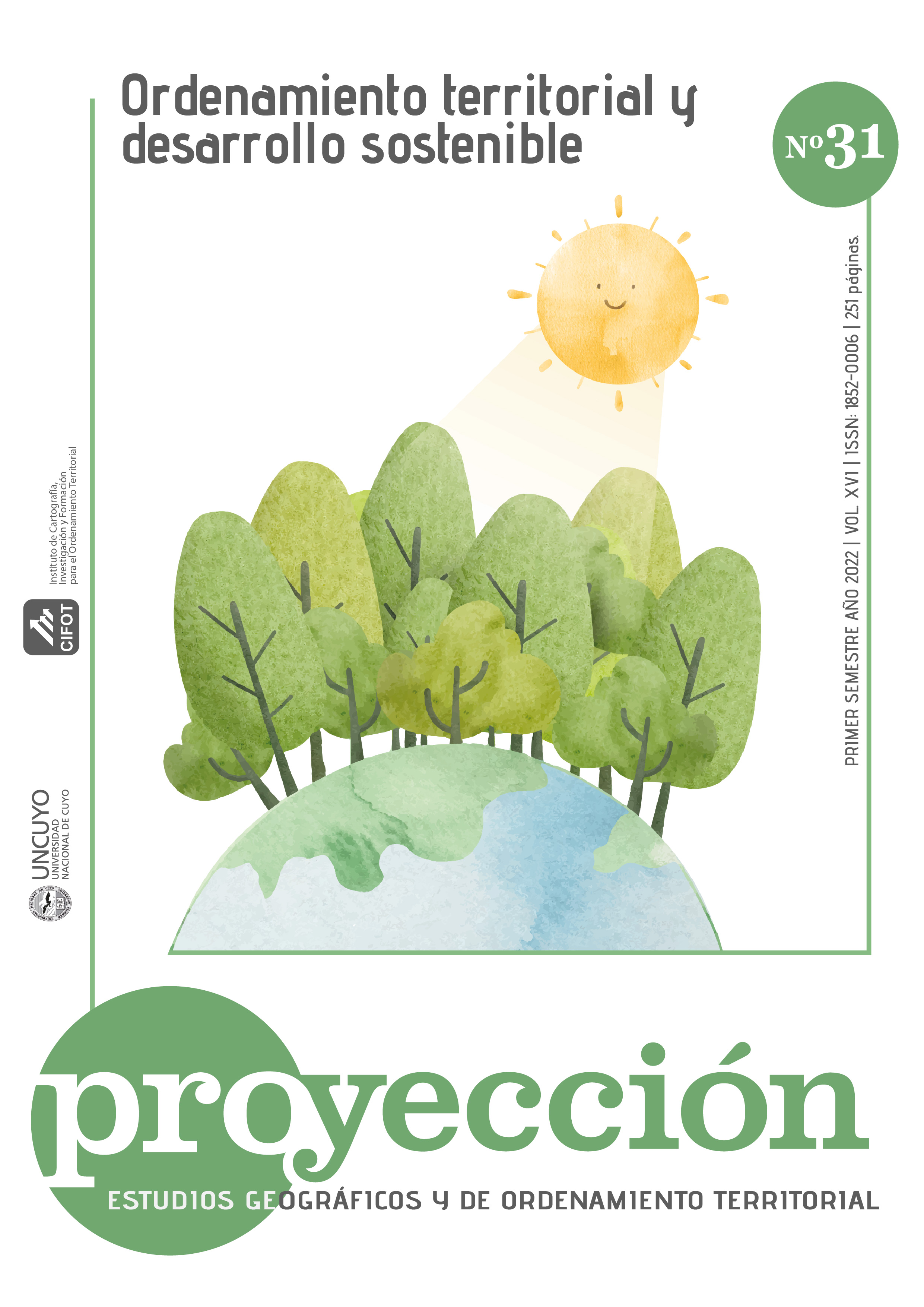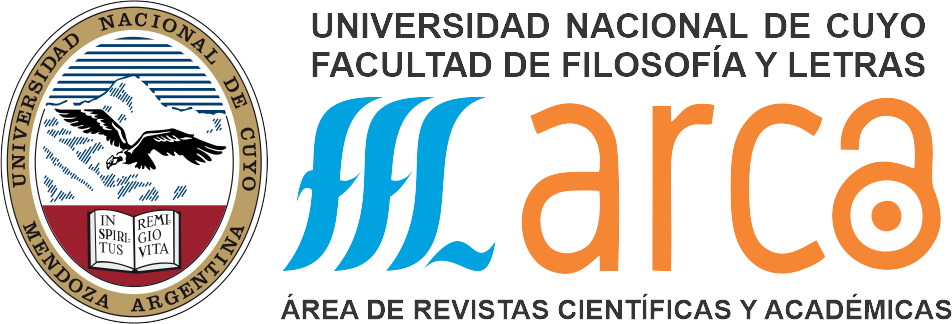Urban Rurality of the City of Villa María, Córdoba.
Towards a healthy, inclusive, and sustainable planning
DOI:
https://doi.org/10.48162/rev.55.025Keywords:
Development, territory, interdisciplineAbstract
Interdisciplinary and interinstitutional work contributes to territorial construction, consolidating bases and spaces for the integral development of the territory. This proposal sought to analyze the process of creating Municipal Ordinance N° 7.209 in the city of Villa María, Córdoba. A research group began to work on the delimitation of the peri-urban area of the city as the local government was modifying the municipal zoning ordinance. This inter-institutional work gave up the opportunity to use the academic study as a scientific basis for the review of municipal ordinances that regulated land use planning. Survey forms and participating activities were carried out to learn about the status and demands of this peri-urban area. The research defined the environmental baseline, considering the results from participating activities, and the projection of local government. It was made towards a healthy, inclusive, and sustainable city. Municipal Ordinance No. 7,209 was passed unanimously at the end of 2017 and established the new zoning plan, the creation of a urban-rural technical unit and its role.
References
ARAMBURU, M. P., ESCRIBANO, R., & R RUBIO, B. (2001). Cartografía del paisaje de la Comunidad de Madrid. En III Congreso Forestal Español. Sierra Nevada.
BRAN, D., GAITÁN, J. J., & WILSON, M. G. (2017). Los indicadores de calidad de suelo como un componente de la sustentabilidad de los agroecosistemas. WILSON, Marcelo Germán. Manual de indicadores de calidad del suelo para las ecorregiones de Argentina. Entre Ríos. INTA, 15-17.
CARDOSO, M. M. (2019). Aproximación a las territorialidades múltiples en espacios rururbanos. Bitacora, 29(2), 81–88. https://revistas.unal.edu.co/index.php/bitacora/article/view/65532/pdf
CENDRERO A., FRANCÉS E, LATRUBESSE E. M, PRADO R., FABBRI A., PANIZZA M., CANTÚ M.P, HURTADO M., GIMÉNEZ J.E., MARTINEZ O., CABRAL M., TECCHI R.A, HAMITY V., FERMAN J.L., QUINTANA C., CECCIONI A., RECATALA L., BAYER M. & AQUINO S. (2002). Proyecto RELESA-ELANEM: Uma nova proposta metodológica de índices e indicadores para avaliaçao da qualidade ambiental. Revista Brasileira de Geomorfología, Año 3, Nº1: 33-47.
CROJETHOVICH M. A & BARSKY, A. (2012). Ecología de los bordes urbanos. En Di Pace M. & Caride Bartrons (dic) Ecología Urbana. Buenos Aires. Ed. UNGS. Pp 185-232.
GÓMEZ OREA, D., & GÓMEZ VILLARINO, A. (2014). Ordenamiento Territorial. Mundi-Prensa Libros. 543p.
GONZÁLEZ URRUELA, E. (1987). La evolución de los estudios sobre áreas periurbanas. Anales de Geografía de La Universidad Complutense, 7(439). https://revistas.ucm.es/index.php/AGUC/article/view/AGUC8787110439A
GUIMARÃES R. (1998). Aterrizando una cometa: indicadores territoriales de sustentabilidad. ILPES Documento 18/98. Serie investigación. Santiago de Chile.
GUZMÁN, L. A., ZULAICA, M. L., & MIZDRAJE D. (2021). Fragmentación de las estructuras ecosistémicas en el periurbano de Villa María, Córdoba, Argentina. Geografia e Ordenamento Do Território, 21, 139–158. http://cegot.org/ojs/index.php/GOT/article/view/2021.21.006/pdf
GUZMÁN, L. A., MIZDRAJE, D., & FURLÁN, M. L. (2020). Visibilización y reconocimiento de los recursos naturales y culturales en espacios del periurbano. Tekoporá, 2(1), 155–168. https://www.revistatekopora.cure.edu.uy/index.php/reet/article/view/40/41
GUZMÁN, L. A., BECKER, A., & BEDANO, J. (2018). AVANCES Y ANÁLISIS EN LA CONSTRUCCIÓN DE INDICADORES DE PRESIÓN, ESTADO Y RESPUESTA PARA LA CALIDAD AMBIENTAL EN EL PERIURBANO DE VILLA MARÍA, CÓRDOBA, ARGENTINA. Revista Geográfica Digital, 29, 1–11. https://doi.org/http://dx.doi.org/10.30972/geo.15292905
GUZMÁN L., BECKER A., RODRIGUEZ J. M., GRUMELLI M. (2017). Análisis de los parches de uso del suelo en el periurbano de Villa María, Córdoba, como herramienta para la planificación urbana. XX Congreso Geológico Argentino. 7-11 Agosto. San Miguel de Tucumán. Argentina. Pp 55-63.
MATTEUCCI, S. D. (1998). La creciente importancia de los estudios del medio ambiente. Pp 35-62. En Matteucci, S. D. y Buzai G. (compiladores), Sistemas ambientales Complejos: herramientas de análisis espacial. Ed. Eudeba. Buenos Aires.
MUÑOZ F. (2010). Revitalización versus rurbanización. Estrategias de política territorial en Catalunya. En: BERTUZZI M. L. (comp.) Vivir en el paisaje. Reflexiones sobre problemática urbana de la costa. Sta Fe. Ed. Ediciones UNL. Pp26-39.
NOGUERA J. (2011). La Ordenación Urbanística: Conceptos, herramientas y prácticas. (1ª ed) Universidad Politécnica de Catalunya, España
REYES, J. E., Y BALLESTEROS, E. R. (2011). Resiliencia Socioecológica: aportaciones y retos desde la Antropología. Revista de Antropología Social, 20, 109-135.
RÜEDI, R. (2016). Historia de Villa María. Ed. El Narval.
VIEYRA, A., MÉNDEZ, Y., HERNÁNDEZ, J. (2018) Procesos urbanos, pobreza y ambiente, implicaciones en ciudades medias y megaciudades. UNAM 184p.
VILAS, C. M. (2003). Descentralización de políticas públicas: Argentina en la década de 1990. INAP.
Downloads
Published
How to Cite
Issue
Section
License
Copyright (c) 2022 Leticia Ana Guzmán, Silvia R. Carriazo, Valeria Suarez, Leonardo Castoldi, Dafne Mizdraje

This work is licensed under a Creative Commons Attribution-NonCommercial-ShareAlike 3.0 Unported License.
La revista Proyección establece las siguientes condiciones de publicación para los/as autores/as:
- Los/as autores/as conservan los derechos de autor y ceden a la revista el derecho de publicación bajo la Licencia Creative Commons Atribución-No Comercial-CompartirIgual 3.0 No portada (CC BY-NC-SA 3.0) que permite a terceros copiar, distribuir, exhibir y ejecutar la obra citando siempre la fuente y los datos de autoría según la norma prevista por la Revista Proyección. Esta licencia no permite el uso de la obra con fines comerciales.
- Todos los trabajos publicados por Proyección, Estudios Geográficos y de Ordenamiento Territorial serán bajo la modalidad de gratuidad para autores/as y lectores/as.










